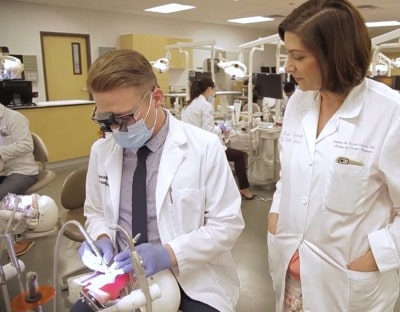Technology has never moved faster in the world than right at this moment. From financial technology to space exploration, humanity is making great strides in terms of innovation.

For instance, in the past few years, virtual reality (VR) has shown its remarkable potential to revolutionize how we play games, visit places, watch movies and even how we work.
When it started, most people thought VR would be just a fad restricted to the entertainment and gaming industries. But now, virtual reality is being implemented across a wide range of industries, some that you would have never expected.
One interesting field where virtual reality is transforming how things are done is in the healthcare industry. As a matter of fact, recent studies show that there are more than 240 hospitals in the U.S. alone, that are applying VR technology to make certain medical processes more efficient and help patients visualize and comprehend their treatment therapies. According to projections, the VR market in medicine is expected to hit $5.1 billion by 2025.
In this article, we will take a brief look at some of the most interesting ways that the healthcare industry is adopting wearable VR technology.
Virtual reality – Applications in healthcare
It is easy to see why the healthcare industry has become one of the earliest and biggest adopters of VR technology. VR is more comprehensive compared to books or cadavers. Furthermore, VR is case and time independent, which means that students can practice various procedures at any time and as many times as they need to.
As a result, many health organizations across the world have been seeking to tap the unique benefits that virtual reality can add to medical procedures.
Medical VR has tremendous opportunities, and even with the technology still at its budding stages, it is already making the lives of both patients and practitioners better in numerous ways.
Virtual reality for medical training
In order to practice medicine effectively, physicians must gain important skills, knowledge, habits, discipline as well as the correct mindset. According to research, virtual reality can offer a lot of benefits in terms of training medical staff and students.
Virtual reality training allows medical students to practice in an engaging and interactive setting. This way, various tasks which would have been otherwise dangerous, expensive or even impossible in the real environment, can be performed easily and repeatedly. For example, staff can be trained on how to correctly identify and handle critical situations such as accidents, where multiple casualties are involved. Also, have a look at the video below from Cleveland, describing the benefits of virtual and mixed reality in medical education.
While training using VR, the procedures can be observed and reproduced. The performance of each procedure can also be recorded for future assessments and analysis. Additionally, augmented information can be displayed to the students to help with the procedure or decision making.
Some companies that are making great strides in terms of virtual reality medical training include Archvirtual and BioFlight.
Using VR for medical diagnosis

Besides training medical staff, VR is also being applied to diagnose various ailments without the need for highly intrusive techniques. This makes it possible to diagnose various ailments more accurately without causing pain or anxiety to the patient.
For instance, recent research from the University of Cambridge suggests that virtual reality can be used to detect early Alzheimer’s disease in patients more accurately compared ‘gold standards’ cognitive evaluations that are currently being used.
Another study conducted by the University of Washington Medical Center shows how VR can be utilized to view the inside of a patient’s blood vessel. In the research, a physician demonstrates how a catheter with electromagnetic sensors could be directed using this technology.
VR is being used as mental health therapy
Cognitive behavioral therapy (CBT) is one of the standard procedures that doctors use to treat patients suffering from mental illness due to its higher rate of success compared to other treatments. It involves treating the symptoms of an illness such as anxiety by plunging the patient into a situation.
Currently, immersive technologies allow us to do much more in terms of CBT. This technology may be used to treat various pathologies, including addiction, eating disorders, schizophrenia, various phobias, anxiety and OCD. For detailed insights about how VR can be used for treating mental illnesses, Kim Bullock, MD has given a spectacular presentation about the topic
For example, CleVR is a VR platform that employs the use of virtual emotion technology to regulate simulated social situations. They also use various experiments to analyze the effectiveness of virtual reality as a tool for treating psychosis and social phobias.
Another similar platform is called Limbix, which enables patients to interact with people in a realistic but virtual surrounding. Such platforms can also help children suffering from autism.
VR technology can help with pain management
Cognitive distraction techniques have been used by practitioners for a long time in medicine to treat different kinds of pain. Now, virtual reality is providing a new way of how these techniques are being carried out through interactive games and content. The games are played in a simulated environment and can provide for powerful experiences.
One good example is the medical experiment program conducted by Professor Spiegel at the Cedar-Sinai Medical Center. Initially, the concept was to improve the experience of patients in hospital rooms by “transporting” them to various destinations using different VR visualizations that are tailored for each patient.
According to a report carried out on 500 patients, VR was able to reduce pain compared to 2D videos. Furthermore, VR was able to help patients have better sleep and a more enjoyable stay in the hospital.
How VR is improving dentistry

VR is not only restricted to medical schools. In dentistry, this technology is also finding wide usage. A company called MOOG has designed remarkable dental training systems that come with features such as haptic feedback technology. These units can deliver an incredibly immersive VR experiences of various dental procedures. Back in 2014, the University of Pennsylvania’s School of Dental Medicine was the first dental institution to integrate this technology into its curriculum in the U.S.
Dental students can choose to perform a range of procedures, such as filing teeth using a virtual drill which mimics the pressure and movement of a real drill via haptic feedback. This feedback is in the form of subtle pressure changes which guide the student to change their movement or pressure accordingly.
It is said that 75% of dental patients experience dental fear. VR is now being used to alleviate dental anxiety in patients, with companies such as Guided VR offering a myriad of VR experiences to help in this niche.
VR in fitness and for people with motor impairment
VR technology has taken the fitness industry by storm, changing the way exercises are being experienced today. There are startups in the fitness industry now integrating cardio and other routines with VR to make it easier and more fun to exercise.
Furthermore, VR is playing a major role to improve motor impairment in persons with disabilities using exercise routines that combine VR instead of medicine or invasive surgeries.
For instance, two companies, Lambda Health System and MindMaze are creating rehabilitation devices to help patients with locomotor disabilities as a result of stroke. The device combines VR technology, a haptic rehabilitation robot and the skills of a therapist, which help to increase the quality and intensity of training.
VR in surgery
VR allows surgery to be carried out using a robotic device controlled by a human surgeon. This technique reduces the time as well as the risk associated with complications that normally arise during surgery.
Furthermore, VR makes telesurgery, where surgery is performed by a surgeon in a different location, a reality. In this respect, the force feedback feature is used to guide the surgeon on the amount of pressure to apply when performing delicate procedures.
Another way VR is changing surgery is by giving surgeons the most precise images possible on the part of the body to be operated on. To this end, the University of Basel recently developed a technology that uses computed tomography to generate 3D images in real time that can be used in virtual space. This gives surgeons the ability to view various organs and where they need surgery way before the procedure begins.
Companies making advanced innovations in medical VR
There are numerous healthcare companies that are creating revolutionary VR solutions and applications in the healthcare industry, some of those are listed below.
Psious
Psious a Spanish and American company that offers unique VR treatment for patients with general anxiety and phobias. Under the control of a physician, patients get into situations which they are afraid of with the help of VR. The goal is to help them face their fears and hence let them go without any real risks involved.
Immersive touch
This is one of the leading companies in surgery using VR. The company was created to allow surgeons to see, feel and experience the surgical pathways that would be most successful and least invasive in order to improve patient outcomes. It allows surgeons to upload MRI and CT scans onto the platform which are then reconstructed into 3D models that can be viewed via VR for rehearsal or training.
AppliedVR
appliedVR refer to themselves as the “Netflix” equivalent but for medically therapeutic content. This start-up conducts in-depth studies around the functionality and effectiveness of VR at different stages of a patient’s healing path.
They aim to come up with better designed and medically beneficial VR content. They are partners with leading institutions in healthcare VR including the Boston’s Children Hospital and Cedars-Sinai Medical Center.
VirtaMed
VirtaMed is a Swiss company that develops highly realistic and interactive surgical simulators to be used in medical training. It allows surgeons to use real instruments to train in a risk-free environment before performing procedures on patients.
VirtaMed has impacted how orthopedic surgery is being trained in Switzerland. For instance, since 2013, it is a requirement for every doctor in the country seeking to specialize in orthopedic surgery to pass an exam on a virtual simulator called the VirtaMed ArthroS.
Osso VR
Osso VR is a Boston based company that is developing a surgical VR platform which trains orthopedic surgeons. They use VR headsets that can track 1:1 hand movements in real time, and hence capable of training procedures such as hip and knee replacement or placing a tibial nail.
Firsthand Technology
Firsthand is a company based in San-Francisco that has been instrumental in designing VR-based pain relief applications and generally using VR as a form of pain management. According to studies enlisted by the company, narcotics reduce the time thinking about pain by 10%, while VR can reduce this by a staggering 48%.
Limitations of virtual reality in medicine
Being a rather new technology, virtual reality in healthcare still has some limitations that all interested parties will have to overcome for more functional applications.
First, the equipment utilized in virtual reality are costly since it is composed of complex technology. Secondly, VR still remains a largely untested technology, which after long term use, may contain negative side effects on the brain and cognitive systems.
One of the main disadvantages of virtual reality is that the required technology for a fully immersive experience has stayed elusive. Haptic systems that provide physical feedback or those that allow a complete expressive proximity within a surrounding so far have been awkward and may present issues during application.
Lastly, a simple head-mounted hardware may fail in the immersion sense since the controls for most devices are hard to reach. Similarly, features such as wires and headphones become restraining to natural movement.
Conclusion
In the last 50 years, our capabilities in the sciences as well as health and medicine has increased tremendously. With the proliferation of VR technology, it seems like the ways to improve are truly endless.
It is exciting to see immersive technology finding such wide and practical usage towards healing and improving qualities of life in different ways. With more companies entering the scene, VR technology in healthcare is just beginning, but it is here to stay and it will be interesting to see the future of VR.
There are still some details to be ironed out, but so far, VR is causing major changes in the healthcare industry. In case you have happened to stumble upon an interesting application of virtual reality in healthcare that has not featured in this list, be sure to let me know in the comments section below.
To your health!
